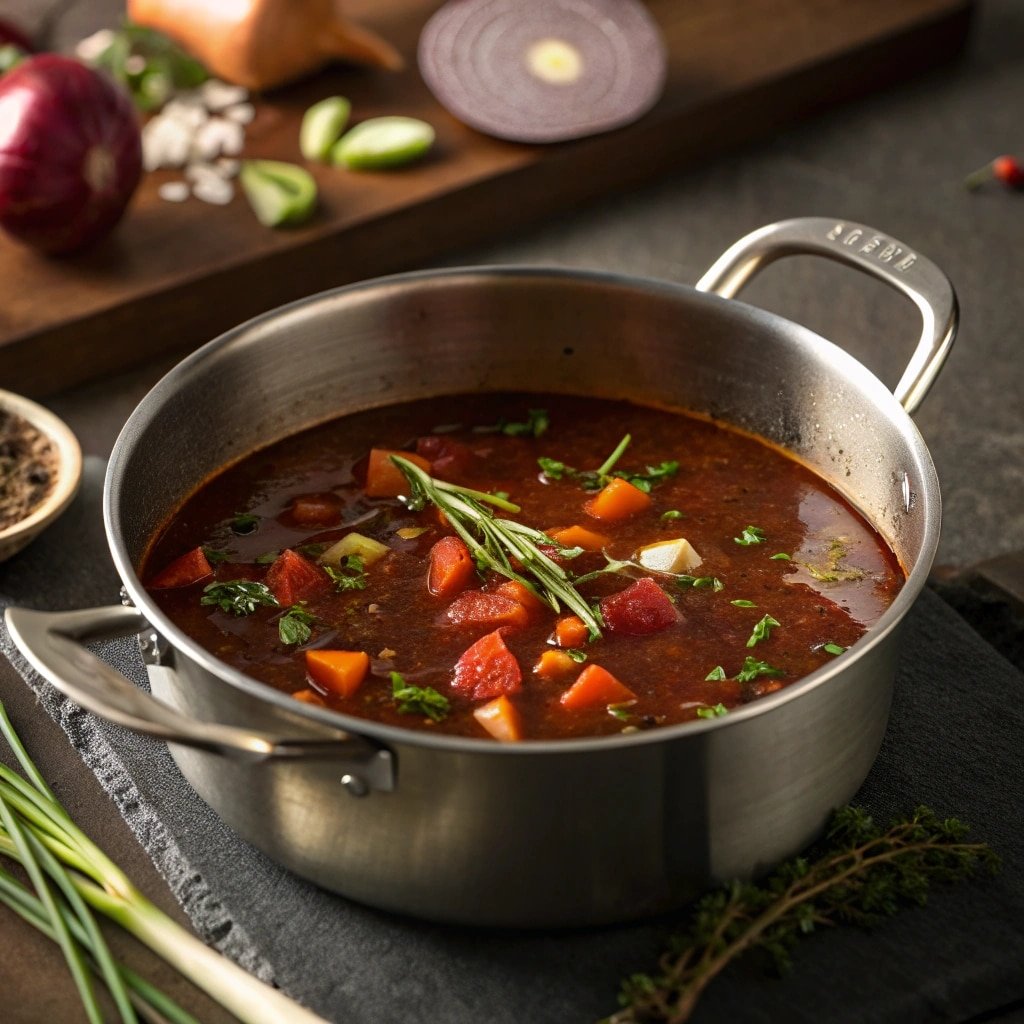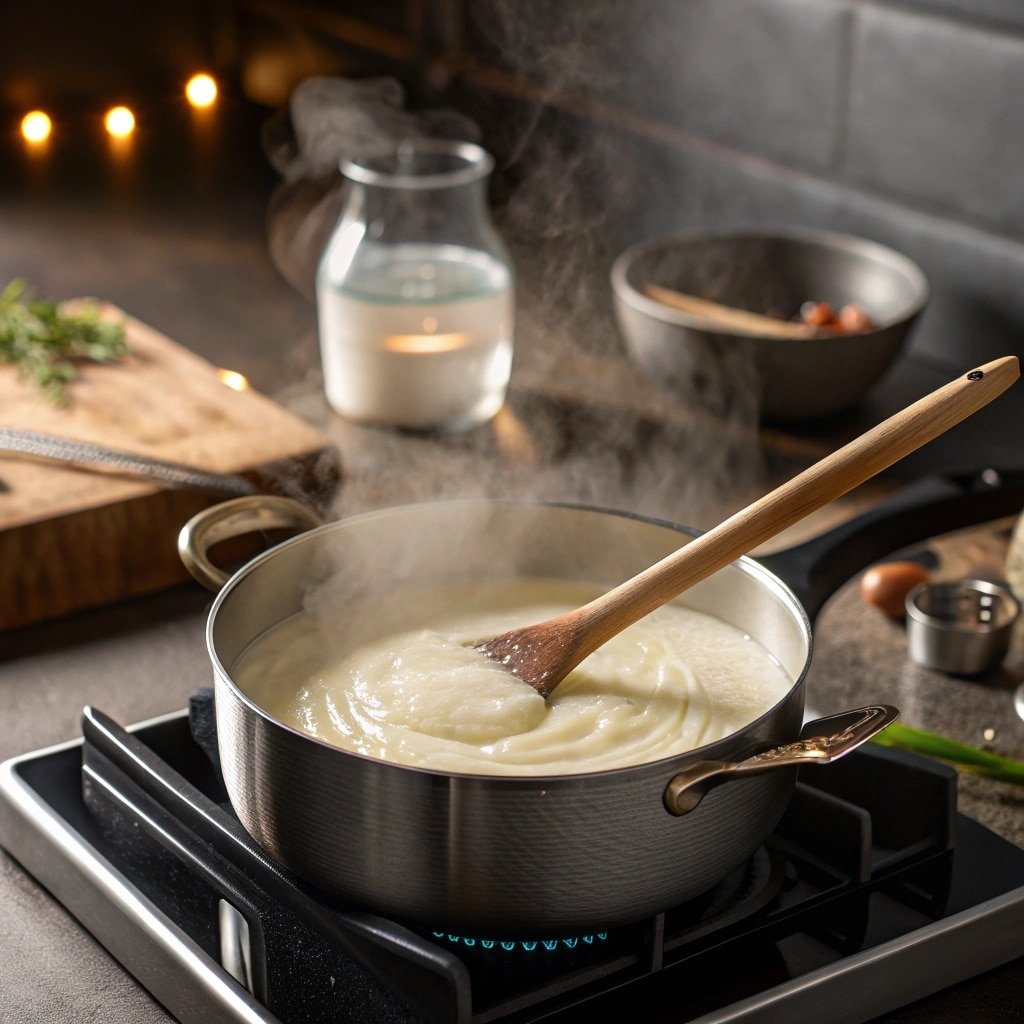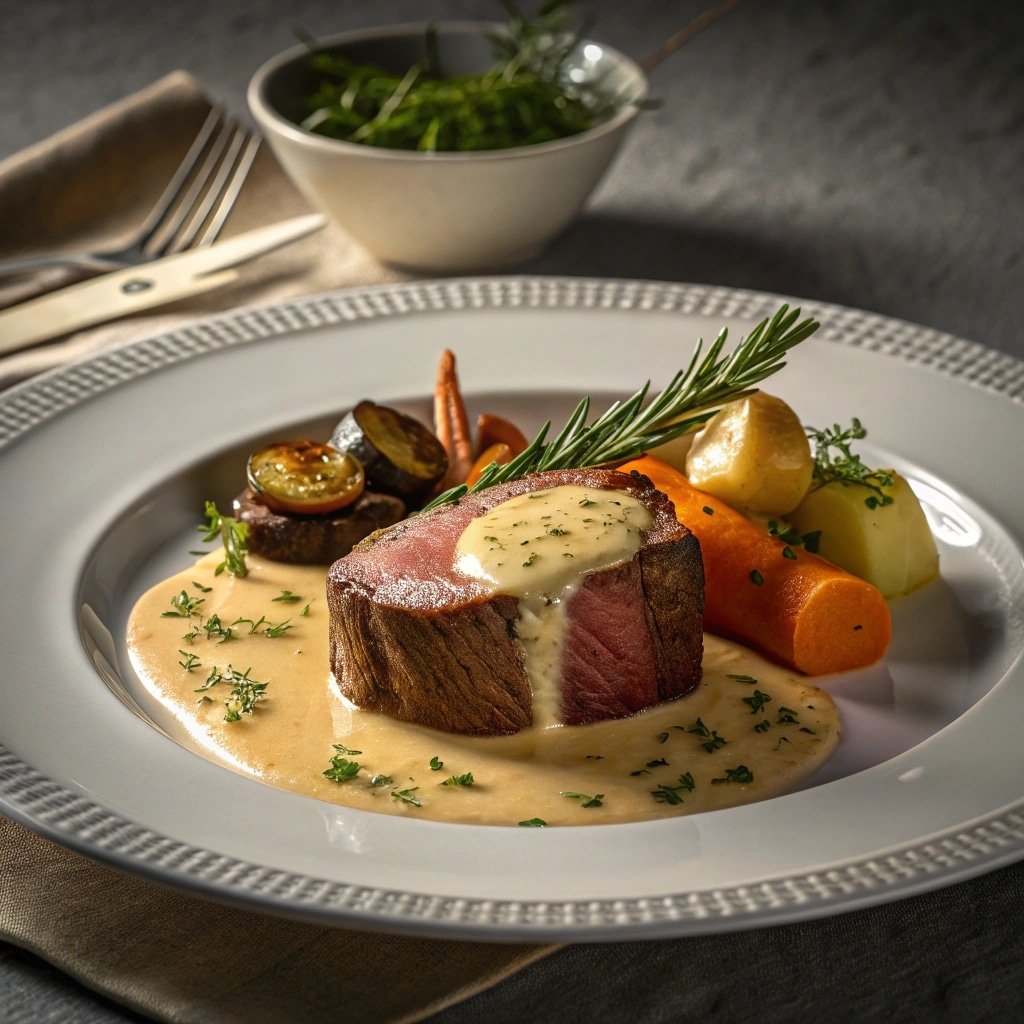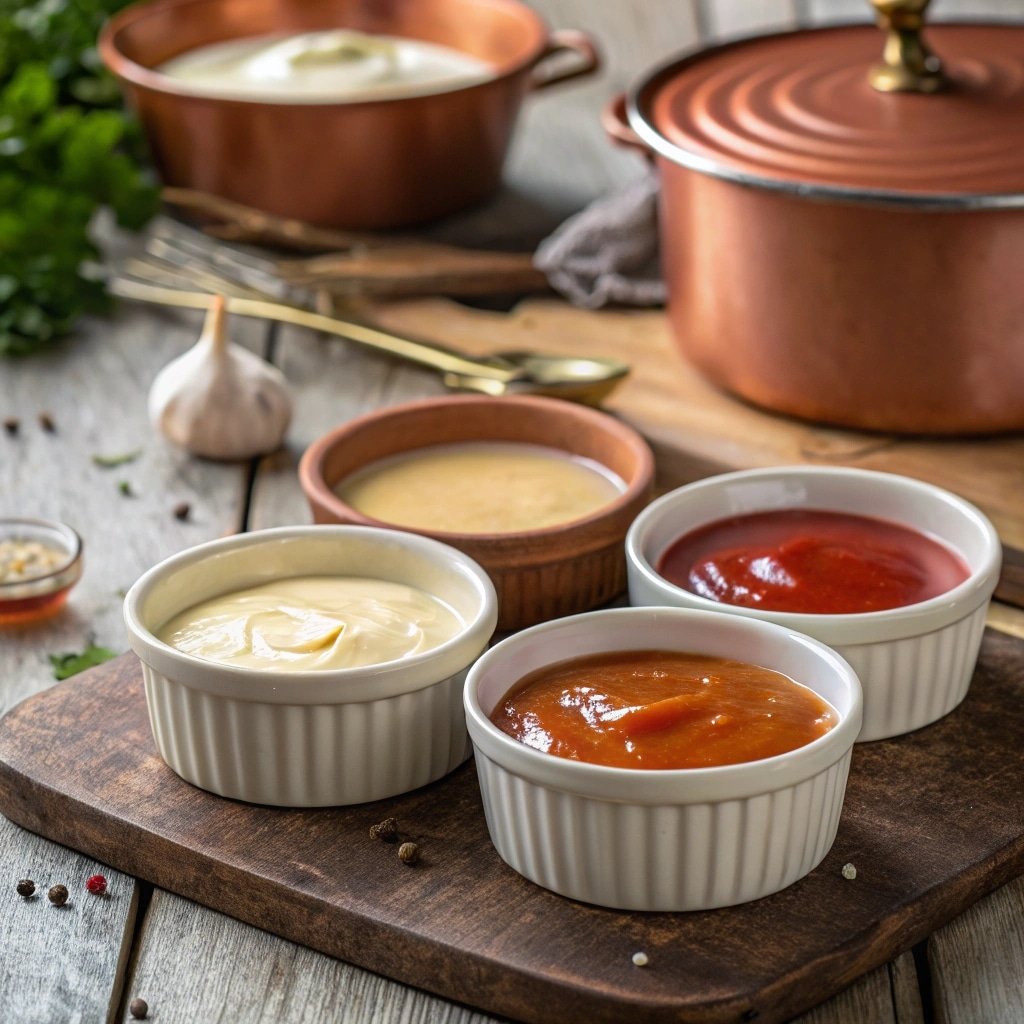A classic French sauce is more than a finishing touch — it’s the soul of French cooking. These timeless sauces form the foundation of some of the world’s most beloved dishes. In this article, we’ll uncover the original five classic French sauces, explore their history, and explain why they remain essential today. We’ll also clarify how they differ from the commonly mentioned sixth sauce, and identify the one most tied to French tradition. If you’ve ever wanted to cook with confidence and flavor like the French, this guide to classic French sauce is your starting point.
Table of Contents
A Classic French Sauce Begins with a Memory
Why a classic French sauce is more than just a recipe
The first time I made a classic French sauce, it was béchamel. I was just a teenager, nervously stirring a roux, unsure if I was doing it right. But as the flour and butter came together with warm milk, something magical happened — the kitchen filled with a cozy aroma, and suddenly the dish felt like it mattered. That’s the power of a classic French sauce: it doesn’t just change your food, it changes the way you feel in the kitchen. These sauces embody the warmth of heritage, the foundation of tradition, and the freedom to craft something uniquely your own.
The emotional depth behind every stir
For me, these sauces were never about perfection. I didn’t grow up in a French household, but learning how to prepare a classic French sauce made me feel like I was stepping into a bigger story — one that chefs and home cooks have shared for generations. When you whisk hollandaise over low heat or reduce an espagnole until it’s deep and rich, you’re not just cooking. You’re honoring a craft that’s been passed down for centuries. Each sauce teaches patience, confidence, and the beautiful lesson that even the simplest ingredients, when handled with care, can become extraordinary.
What Are the Five Classic French Sauces?
The true backbone of French cooking
The concept of a classic French sauce dates back to the early days of modern French cuisine, when chefs sought to organize recipes into clear, teachable forms. These base sauces, often called the “mother sauces,” are the starting point for countless variations. Each one offers a unique flavor profile, texture, and purpose. Mastering these five not only improves your cooking but helps you understand the fundamentals of building flavor from the ground up. They’re not just historical; they’re practical, and they remain deeply relevant in today’s kitchens.
The essential five sauces and what makes them special
- Béchamel – A smooth, white sauce created by gradually adding milk to a roux, which is a blend of butter and flour. It’s often used in baked dishes and casseroles for its smooth richness.
- Velouté – Light and delicate, this sauce also starts with a roux but uses stock instead of milk. Common bases include chicken or fish broth, making it perfect for poultry and seafood.
- Espagnole – A hearty, flavorful sauce prepared using brown stock, tomato paste, and a blend of aromatic vegetables. After simmering, it develops complex, earthy flavors ideal for red meats.
- Hollandaise – This is an emulsion made from egg yolks, melted butter, and lemon juice. It’s gently heated and whisked to create a silky texture, ideal for vegetables or poached eggs.
- Tomate – Made with ripe tomatoes, herbs, and often a touch of stock, this sauce is thicker and more rustic. While similar to Italian tomato sauces, it’s prepared in a uniquely French way.
Each classic French sauce begins with simple ingredients and ends in something refined. These are more than recipes — they’re techniques every passionate cook can build on.



What Is the Traditional Sauce in France?
Defining tradition through sauce
When it comes to identifying the most traditional sauce in French cuisine, the answer isn’t just about ingredients — it’s about history and cultural presence. Among the five mother sauces, béchamel holds a special place in French households. It has been a staple for generations in classic family dishes like croque-monsieur and gratins. But if you look beyond béchamel and consider broader French cooking, sauce velouté also stands out for its versatility and frequency in classic meals. The truth is, no single sauce can represent all of French tradition — each one plays a role in different regions, seasons, and meals.
Why one sauce can’t define French tradition
While many might assume there’s one iconic sauce that defines France, the reality is more nuanced. The traditional French kitchen values seasonality and technique. That’s why each classic French sauce carries its own sense of place. Espagnole, for instance, reflects slow-cooked stews found in hearty winter fare. Hollandaise evokes spring, often served with fresh asparagus or poached eggs. Sauce tomate brings in the influence of southern France, rich with Mediterranean flavors. Even within France, preferences shift — what’s common in Normandy might not be found in Provence. In this way, tradition isn’t tied to just one sauce. It’s found in the respect for method and the balance of taste.
The classic French sauce isn’t a single recipe — it’s a mindset. It’s about transforming basic ingredients into something meaningful. Whether it’s béchamel in a childhood casserole or hollandaise made for brunch, these sauces become part of our memory, not just our meals. That’s what makes them truly traditional.
Print
Classic French Sauce Guide: Secrets of Timeless Culinary Tradition
- Total Time: 30 minutes
- Yield: 5 sauces 1x
- Diet: Vegetarian
Description
This guide introduces the five foundational classic French sauces—béchamel, velouté, espagnole, hollandaise, and tomato—and explores their techniques, ingredients, and modern variations. Learn how these sauces shape French cuisine and how to use them at home.
Ingredients
2 tbsp butter
2 tbsp flour
2 cups milk or stock
Salt, pepper to taste
1 egg yolk (for hollandaise)
1 tbsp lemon juice (for hollandaise)
2 cups ripe tomatoes (for sauce tomate)
1 cup brown stock (for espagnole)
Optional: herbs like thyme, bay leaf, parsley
Instructions
1. Melt butter in a saucepan over medium heat.
2. Whisk in flour to make a roux; cook 1–2 minutes.
3. Slowly add milk or stock, whisking constantly.
4. Simmer until the sauce thickens (8–10 minutes).
5. Season with salt and pepper.
6. For hollandaise, whisk egg yolks and lemon juice in a bowl over gentle heat, slowly add melted butter while whisking until thick.
7. For tomato sauce, cook tomatoes with herbs and stock until thickened.
8. For espagnole, cook brown stock with vegetables and tomato paste; simmer and reduce.
9. Use sauces immediately or store for later use.
Notes
These sauces are base recipes—feel free to build flavors with garlic, mustard, wine, or cream.
Each mother sauce can be transformed into dozens of secondary sauces depending on the dish.
- Prep Time: 10 minutes
- Cook Time: 20 minutes
- Category: Sauce
- Method: Stovetop
- Cuisine: French
Nutrition
- Serving Size: 1/2 cup
- Calories: 120
- Sugar: 2g
- Sodium: 180mg
- Fat: 9g
- Saturated Fat: 5g
- Unsaturated Fat: 3g
- Trans Fat: 0g
- Carbohydrates: 6g
- Fiber: 1g
- Protein: 2g
- Cholesterol: 45mg
Keywords: classic French sauce, béchamel, hollandaise, velouté, mother sauces
What Are the Six Classic French Sauces?
The evolution from five to six
Traditionally, French culinary schools and cookbooks teach five base sauces. However, in modern kitchens, a sixth sauce is often added to the list: mayonnaise. Though not originally included by Escoffier, many chefs now recognize it as a foundational preparation due to its method and versatility. Like hollandaise, mayonnaise is an emulsion — but it’s cold and typically made without heat. It’s become so essential in French and global cuisine that it’s widely accepted as an unofficial extension of the mother sauce family.
Why mayonnaise earns its place
Unlike the other five, mayonnaise doesn’t require cooking, but it demands precision. It starts with egg yolk and oil, carefully blended to form a stable, creamy emulsion. A touch of mustard or vinegar is often added to enhance its sharpness. From this base, cooks can create countless variations, such as aioli, remoulade, and tartar sauce. While it may lack the historical roots of béchamel or espagnole, mayonnaise holds its own as a staple across France — from casual cafés to fine dining restaurants. Its ease and adaptability make it a natural evolution in the story of the classic French sauce.
Today, when people refer to the “six classic French sauces,” they acknowledge both tradition and innovation. The original five remain at the core of French technique. But the inclusion of mayonnaise reflects how French cuisine, while deeply rooted, continues to grow and adapt with time. Recognizing this sixth sauce isn’t just about updating a list — it’s about honoring the living, breathing nature of culinary tradition.

Conclusion: The Art of the Classic French Sauce
Mastering a classic French sauce is about more than technique — it’s about understanding flavor, history, and balance. These sauces may have simple ingredients, but they carry generations of skill and passion. From the creamy smoothness of béchamel to the vibrant sharpness of hollandaise, each sauce teaches a different lesson in culinary craft. Whether you stick to the traditional five or embrace the modern six, these sauces empower you to cook with creativity and confidence.
If you’re just beginning, start with one sauce and learn it well. With time, you’ll not only master each one — you’ll also gain the freedom to create your own. That’s the true beauty of French sauce making: it gives you the foundation to express yourself in the kitchen. And every time you stir a roux or whisk an emulsion, you’re carrying on a legacy that’s as flavorful as it is timeless.
For More recipes Follow me in Facebook and Pinterest
Frequently Asked Questions about Classic French Sauce
What are the 5 classic French sauces?
The five classic French sauces, known as the foundation of traditional French cuisine, are: béchamel, velouté, espagnole, hollandaise, and tomato. Each one is a base that can be turned into many other sauces, making them essential for building flavor in countless dishes.
What are the 5 base French sauces?
The base sauces in French cooking — often called “mother sauces” — are:
Béchamel: made with milk and roux
Velouté: made with light stock and roux
Espagnole: a deep brown sauce from brown stock
Hollandaise: a rich emulsion of eggs and butter
Tomato: a thick sauce from tomatoes and herbs
These sauces create the groundwork for nearly every classic French sauce variation.
What is the traditional sauce in France?
While each region of France uses sauces differently, béchamel is often viewed as the most traditional due to its simplicity and long-standing presence in everyday French cooking. It’s a familiar part of many baked dishes and creamy gratins found in French homes.
What are the six classic French sauces?
In modern culinary discussions, a sixth sauce is often added to the classic five: mayonnaise. Though it differs in technique — being a cold, uncooked emulsion — its role in French cuisine is significant enough to earn a place among the classics. The six sauces now include: béchamel, velouté, espagnole, hollandaise, tomato, and mayonnaise.

